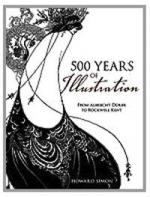|
This section contains 340 words (approx. 2 pages at 300 words per page) |
Encyclopedia of World Biography on Rockwell Kent
The American painter and illustrator Rockwell Kent (1882-1971) fitted into the realist tradition that was a revolutionary force early in the 20th century and then gradually developed a stylized approach to subjects taken from the working class.
Born in Tarrytown Heights, N.Y., on June 21, 1882, Rockwell Kent studied architecture at Columbia University. However, he became a painter, studying with William Merritt Chase, Robert Henri, and others. A socialist from an early age, he apparently saw his work as growing out of a general socialist respect for workers. He was deeply involved in the agitation against the National Academy of Design led by Henri and John Sloan and was an exhibitor in the famous Armory Show of 1913. This was the limit of his commitment to revolutionary art, however, for the workers he idealized in his paintings and drawings were usually outdoorsmen and other solitary types--trappers, fishermen, and other such individualists--rather than the urban, assembly-line workers most often thought of as the subject of socialist concern.
Kent was a remarkable man. Perhaps because of his political beliefs, but probably out of some deeper feeling for reality, he worked at various times in his life as a lobsterman and carpenter along the coast of Maine and as a ship's carpenter. He lived in Alaska, Newfoundland, and Greenland, drawing many of his best-known pictures of the people and their activities there. In a small boat he explored the waters off the southern tip of South America.
Kent wrote and illustrated Wilderness (1920) and Voyaging Southward (1924), which many critics consider the best American books ever produced in terms of harmonious balance between text and pictures. Along with Fritz Eichenberg, Kent is as responsible as any artist for the high level of American book illustration during the first half of the 20th century. His illustrations, like his paintings, often create a mood of loneliness and a sense of man's small resources against the might of nature. Among the authors he illustrated are Shakespeare, Chaucer, and Herman Melville. He died on March 13, 1971, at the age of 88.
|
This section contains 340 words (approx. 2 pages at 300 words per page) |


